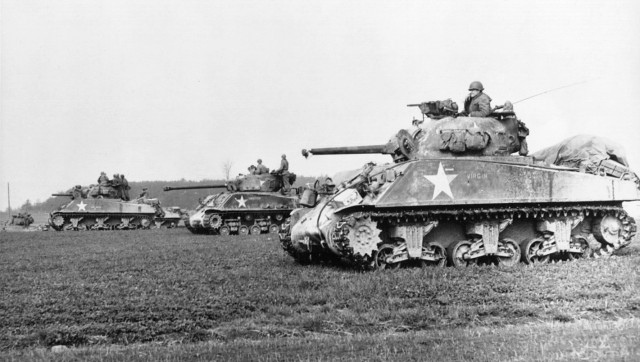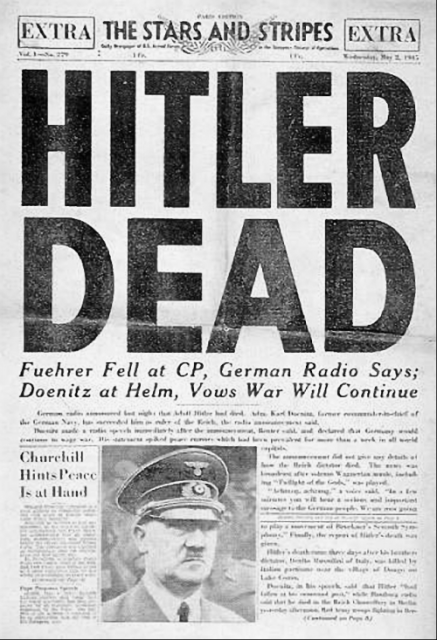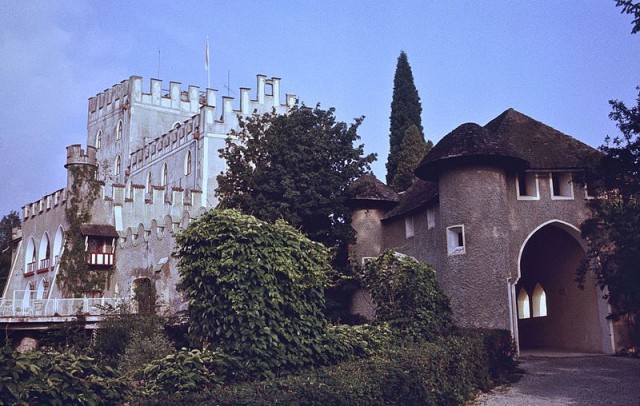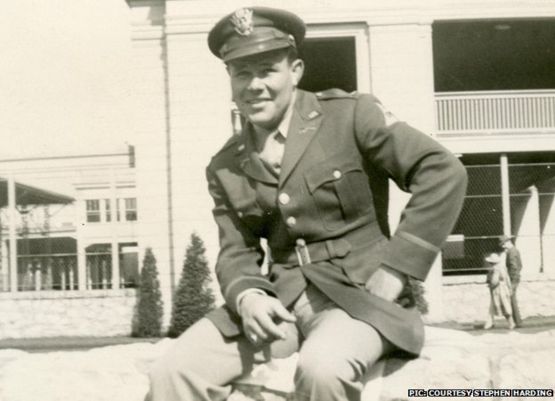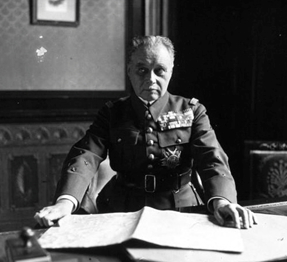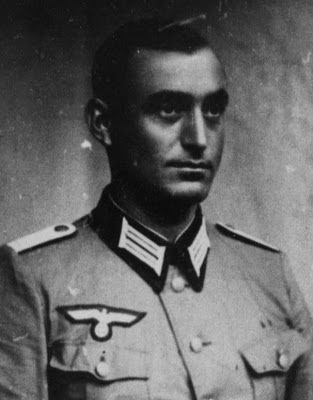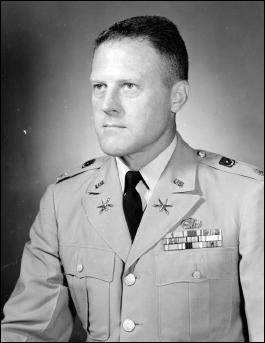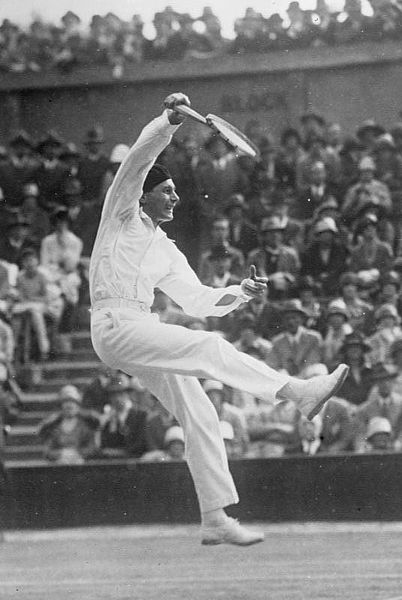Hitler killed himself on 30 April 1945, but some German units fought on, regardless. Shortly after Hitler's suicide, some 435 miles south in Austria, a strange battle would take place – one where Germans and Americans fought together against other Germans from the SS.
The announcement of Hitler’s death in the Stars and Stripes newspaper
It took place at Itter Castle: a high-class prison where the German government kept high-ranking French VIPs, as well as their wives and mistresses. Serving them and maintaining the castle were Eastern European prisoners from Dachau.
Marie-Agnes Cailliau, sister of former President Charles de Gaul, was one of those interned at Itter
On May 2, the SS commander in charge, Eduard Weiter, finally heard of Hitler’s death; so he shot himself. This left the castle to his second-in-command, Sebastian Wimmer.
With help from his French prisoners, Wimmer wrote a letter asking the Americans for help. He knew that Nazi loyalists were still out there, and that his charges were living on borrowed time.
The next day, he gave the letter to Zvonimir Čučković, a Yugoslav inmate, and told him to give it to the first American soldier he found. Čučković found the 409th Infantry Regiment at Innsbruck, but heavy shelling kept them trapped.
Since Čučković hadn’t returned by May 4, Wimmer sent another prisoner to look for the Americans: Andreas Krobot, the prison’s cook. Then Wimmer fled with his wife, leaving the castle in charge of Kurt-Siegfried Schrader, an injured Waffen-SS officer who had earlier befriended the French.
With Wimmer gone, the other German soldiers abandoned their post, leaving the castle to Schrader and the prisoners. Afraid of the loyalists outside, Schrader and the rest broke into the ammunitions room and began arming themselves.
Krobot bicycled his way to the nearby town of Wörgl and found the Austrian Resistance, instead. To his surprise, they had teamed up with Wehrmacht defectors under the command of Major Josef Gangle.
Two Austrian resistance fighters with German MG-42 machine guns
Some eight miles to the north, Captain John C. “Jack” Lee had just arrived in Kufstein with four Sherman tanks of the 23rd Tank Battalion. He was waiting for reinforcements from the 142nd Regiment, when Gangle surrendered to him and told him about Itter. Lee’s superiors approved the rescue, so he headed toward the castle with Gangle and a joint US-German force of 26 men.
The Americans at Innsbruck, meanwhile, finally made their way toward Itter under Major John Kramers. With him was American war correspondent, Meyer Levin, and French photographer, Eric Schwab. They also had four M10 tank destroyers, three jeeps, and soldiers from the 411th Infantry Regiment.
American troops arriving at Innsbruck on 3 May 1945
At Wörgl, the people asked Lee to leave behind some of his men and tanks for protection since a few Nazi soldiers were on a killing rampage as they retreated back to Germany. He agreed. Four miles from Itter, his group got into a skirmish with some SS troops before they finally reached the castle.
Although the former prisoners were happy to see the captain and his men, they were not impressed with the size of their rescue team. Lee placed his tank, the Besotten Jenny, at the main entrance and told the inmates to hide. They refused. At 11PM, Waffen-SS troops took pot-shots at the castle to test its defences, but the thick stone walls protected those inside.
General Gamelin survived the battle
At first light on May 5, some 100 to 150 German soldiers attacked in force. An 88mm antitank gun destroyed a room that had been occupied by French General Maurice Gamelin. The Besotten Jenny, manned by Corporal Szymcyk, returned fire, but it was also taken out by the 88mm. Fortunately, Szymcyk escaped.
Two Waffen-SS troopers with anti-tank weapons
The American and German forces within returned fire, as did the French VIPs, their women, and the other inmates. Gangle was the first casualty, taken out by a sniper as he stood on a roof trying to locate the antitank gun.
Wehrmacht Major Josef “Sepp” Gangl
But Kramers’ group was close. They had arrived at Wörgl, and since it lay in the jurisdiction of the 36th Infantry Division, he had to leave his men and equipment behind as reinforcements. The major tried to radio Lee, but couldn’t get through, so he picked up a phone and reached him.
Major John T. Kramers
Lee told Kramers they were running out of ammunition. Frustrated, Kramers loaded up a jeep with weapons, and with three others, made his way to the castle. As they left town, they heard the gunfire get louder.
Fortunately, the closer the four got to the castle, the more their numbers grew. They were joined by the advanced party of the 2nd Battalion. The 142nd Infantry (whom Lee was waiting for), were already ahead of Kramers’ group.
By noon, the defenders had almost no ammunition left. Communications were down, but Lee was convinced he’d get more if he could just get another message out to Wörgl. Jean Borotra, a French tennis champion, volunteered to go.
Jean Borotra
With little choice, Lee let him, so the Frenchman ran through the cramped village streets beside the castle while eluding enemy fire. He made it. Once at Wörgl, Borotra asked for a uniform from the Americans and joined them as they made their way back to Itter.
To conserve ammunition, Lee ordered a retreat from the outer walls. They intended to make their last stand deep inside where they could engage in hand-to-hand combat, if need be. By 4PM, with no more return fire from the castle, those outside began making their way in.
A little after 4PM, however, a Wehrmacht soldier standing on a roof cried out, “American tanks!”
An M4 Sherman Tank at the George Patton Museum in Fort Knox, Kentucky
He was right. Several tanks (including some that Lee and Kramer had been forced to leave behind at Wörgl) were making their way toward the castle, followed by more American troops. About 100 of the attackers surrendered to the American relief forces.
The first to reach the besieged were Technical Sergeant William E. Elliot and Sergeant Glenn E. Sherman. According to Levin, Lee didn’t thank the two. He instead asked, “What kept you!?” That’s when they started laughing.
Itter Castle after the battle taken by Schwab
Two days later, Germany signed an unconditional surrender to the Allies.
In 1972, a reporter asked Lee how he felt about fighting with German soldiers against other German soldiers.
He replied, “Well, it was just the strangest thing!”
The Strangest Battle of WWII - When Germans And Americans Together Fought The SS
